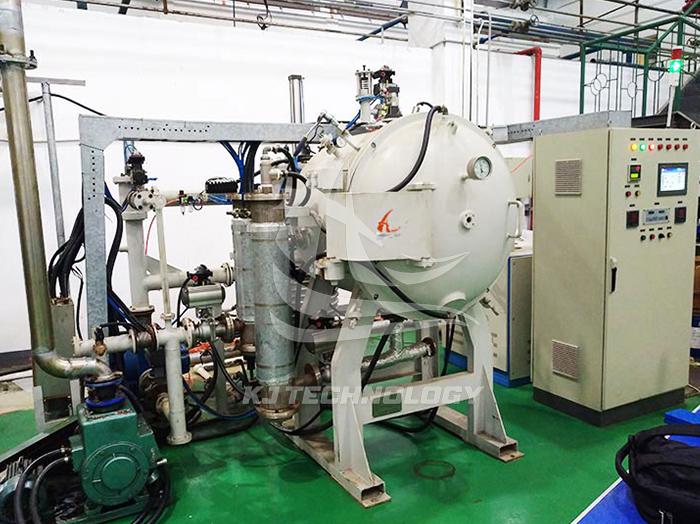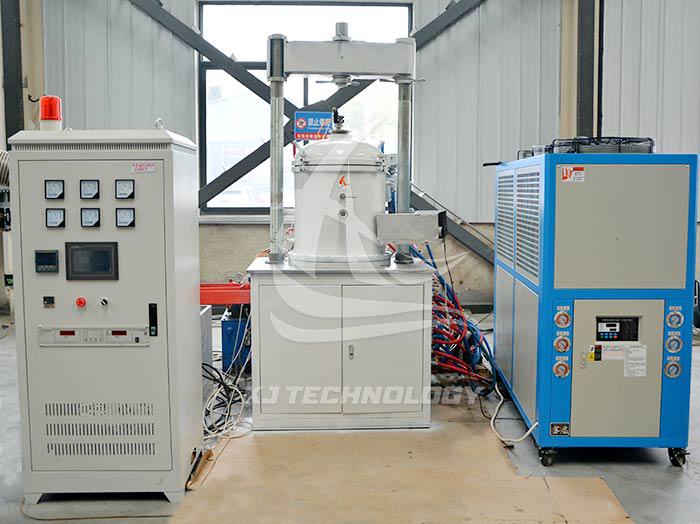What is an electric heating vacuum annealing furnace?
 03-27-2025 Author: KJ technology
03-27-2025 Author: KJ technology
A vacuum annealing furnace is an industrial furnace used for annealing metal or other materials in a vacuum environment. The following is a detailed explanation about the vacuum annealing furnace:
1. Definition and Working Principle
Definition: A vacuum annealing furnace is a device that heats, maintains, and cools materials in a vacuum state (usually up to 10-3 Pa to 10-5 Pa) inside the furnace body to improve their microstructure and properties.
Working principle: The air inside the furnace is pumped out by a vacuum pump to create a vacuum environment. Then, heating elements (such as resistance wires, graphite heating elements, etc.) are used to heat the material to the annealing temperature. After a period of time, the material is slowly cooled to eliminate internal stress, improve organizational structure, and enhance performance.
2. Main features
Vacuum environment: The biggest feature of a vacuum annealing furnace is that annealing treatment is carried out in a vacuum environment, which avoids the material from reacting with oxygen, water vapor, etc. during the heating process, thereby reducing the occurrence of defects such as oxidation and decarburization.
Precise temperature control: Adopting advanced temperature control system, it can accurately control the annealing temperature and time, ensuring that the material obtains ideal microstructure and properties.
High quality annealing effect: Due to the more uniform and stable heat treatment process of materials under vacuum environment, the quality of annealed materials is higher and their performance is more stable.
3. Application Fields
Metal materials: Vacuum annealing furnaces are widely used for annealing of metal materials such as stainless steel, titanium alloys, nickel based alloys, etc., to improve their mechanical properties, corrosion resistance, and processing performance.
Semiconductor materials: In the semiconductor manufacturing process, vacuum annealing furnaces are used to anneal silicon wafers to eliminate internal stress and improve electrical performance.
Other materials, such as ceramic materials, composite materials, etc., can also be annealed in a vacuum annealing furnace to improve their performance.
4. Advantages and Significance
Improving material properties: Through vacuum annealing treatment, the mechanical properties such as hardness, strength, and toughness of the material can be significantly improved, while also enhancing its corrosion resistance and processing performance.
Reduce defect generation: In a vacuum environment, the material is prevented from reacting with oxygen, water vapor, etc. during heating, thereby reducing the occurrence of defects such as oxidation and decarburization, and improving the yield and quality of the material.
Promoting industrial upgrading: The application of vacuum annealing furnaces has promoted the upgrading and development of related industries such as metal materials and semiconductor materials, and improved the competitiveness and added value of products.
5. Equipment type and selection
Equipment type: According to different parameters such as heating method, furnace structure, and vacuum degree, vacuum annealing furnaces can be divided into various types, such as resistance heating vacuum annealing furnaces, induction heating vacuum annealing furnaces, etc.
Selection criteria: When choosing a vacuum annealing furnace, it is necessary to comprehensively consider factors such as material type, annealing process requirements, production scale, etc., and select the most suitable equipment type.








